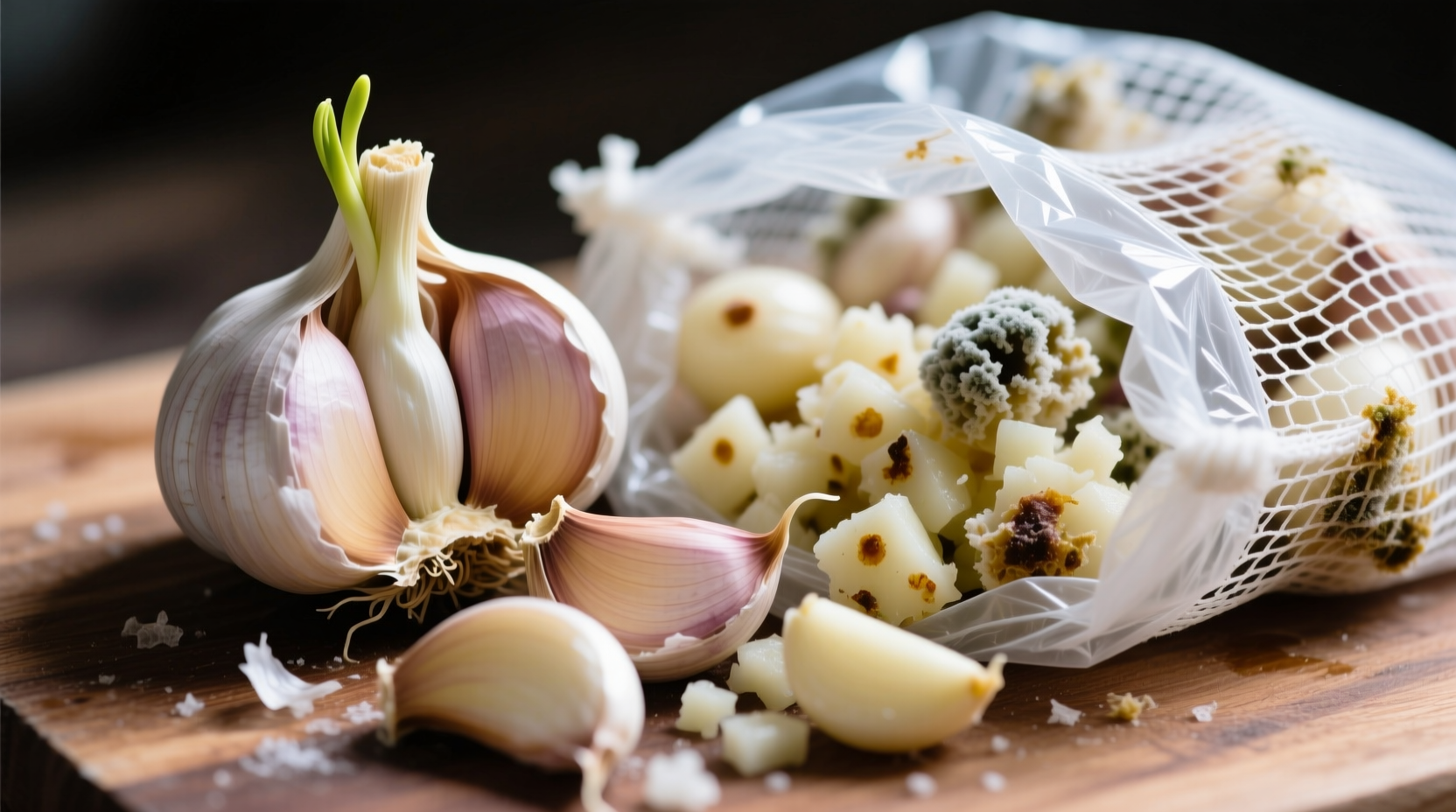Understanding Garlic's Natural Shelf Life
Garlic isn't just a kitchen staple—it's a living food product with specific storage requirements that directly impact its longevity and flavor profile. Unlike many vegetables, garlic enters a natural dormancy period after harvest, which explains its impressive shelf life when handled correctly. The USDA's Agricultural Research Service confirms that proper storage maintains garlic's antimicrobial properties while preserving its distinctive flavor compounds.

Your Garlic Timeline: From Harvest to Spoilage
Understanding the precise timeline for garlic deterioration helps prevent food waste while ensuring optimal flavor. This timeline reflects data collected from Cornell University's post-harvest research on allium crops:
| Storage Condition | Whole Bulb Duration | Separated Cloves | Peeled/Chopped |
|---|---|---|---|
| Cool, dark pantry (60-65°F/15-18°C) | 3-6 months | 7-10 days | N/A |
| Refrigerator (crisper drawer) | 1-2 months | 2-3 weeks | 1-2 days |
| Freezer (airtight container) | Not recommended | Not recommended | 3-4 months |
| Room temperature (above 70°F/21°C) | 1-2 months | 3-5 days | 12-24 hours |
Spotting Spoilage: Beyond the Obvious Signs
While mold and soft spots clearly indicate spoiled garlic, professional chefs watch for more subtle deterioration signals. According to the National Center for Home Food Preservation, garlic undergoes specific chemical changes as it ages:
- Green sprouts in the center indicate aging but don't necessarily mean spoilage—simply remove the sprout and use the clove
- Brown spots on cloves signal oxidation—cut away affected areas for safe use
- Soft texture throughout the clove indicates advanced deterioration—discard immediately
- Vinegar-like smell suggests fermentation has begun—do not consume
Professional Storage Techniques That Actually Work
Contrary to popular belief, refrigeration isn't always the best option for whole garlic bulbs. The University of California's Postharvest Technology Center explains that cold temperatures trigger premature sprouting in intact bulbs. Instead, follow these chef-recommended methods:
The Pantry Method (Best for Whole Bulbs)
Store unpeeled bulbs in a mesh bag or wire basket in a cool, dark pantry with good air circulation. Avoid plastic bags which trap moisture. Ideal conditions maintain 60-65°F (15-18°C) with 60-70% humidity—similar to traditional root cellars.
The Refrigeration Method (Best for Partial Bulbs)
Once you've broken the bulb, transfer remaining cloves to a glass container with a paper towel lining. The USDA Food Safety and Inspection Service recommends this method because the paper towel absorbs excess moisture while the container prevents odor transfer.
The Freezer Method (For Prepared Garlic)
For chopped garlic, freeze in ice cube trays with a small amount of olive oil, then transfer to airtight containers. This preserves flavor compounds better than dry freezing, according to research published in the Journal of Food Science.
Common Storage Mistakes That Shorten Shelf Life
Food safety experts consistently identify these storage errors that reduce garlic's natural longevity:
- Storing near heat sources like stoves or dishwashers
- Keeping in sealed plastic containers before use
- Washing garlic before storage (adds moisture)
- Storing with potatoes (emits sprouting gases)
- Using garlic that shows early sprouting signs in oil (risk of botulism)
When Garlic Goes Bad: Safety Considerations
The FDA warns that garlic stored improperly in oil creates ideal conditions for Clostridium botulinum growth. Never store chopped garlic in oil at room temperature. If you notice any of these danger signs, discard the garlic immediately:
- Any visible mold growth
- Strong, unpleasant odor
- Complete softening of cloves
- Dark discoloration throughout
Maximizing Flavor Throughout Garlic's Shelf Life
As garlic ages, its flavor profile changes. Early in its shelf life, garlic delivers sharp, pungent notes perfect for raw applications. Midway through storage, it develops balanced flavor ideal for most cooking. Near the end of its shelf life, garlic becomes milder—excellent for dishes where you want subtle background notes. Understanding these flavor transitions helps you use garlic at its peak for different culinary applications.











 浙公网安备
33010002000092号
浙公网安备
33010002000092号 浙B2-20120091-4
浙B2-20120091-4